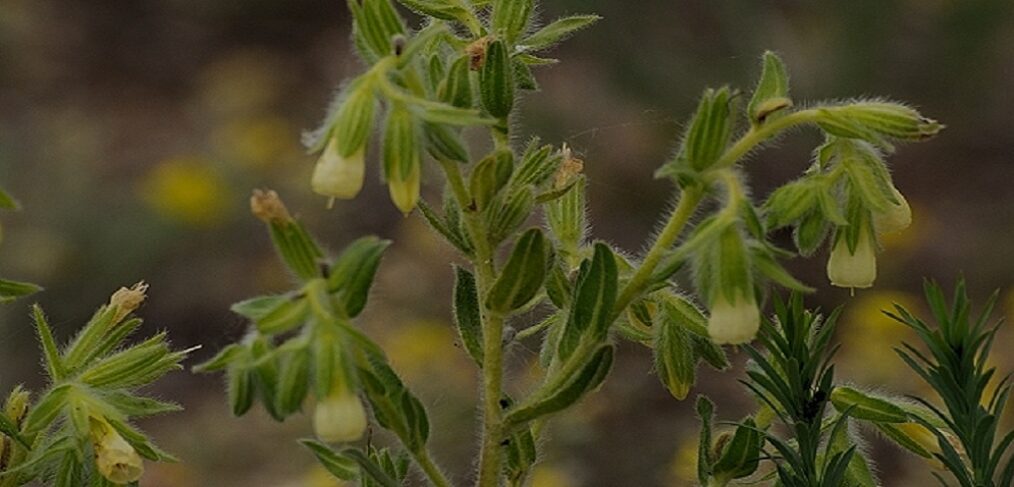
Species of the week # 98- Purple golden-drop
The purple golden-drop can only be found in a few places in Germany. It occurs in the Großer Sand nature reserve, which is located in the Mainz Basin. The population there is estimated at 200 to 300 specimens. The gap between the Mainz occurrences and those in Austria or France is about 600 km. Since an introduction by humans in recent times can be excluded, this population is probably a relict of the Tertiary period, which ended 66 million years ago.
| Distribution status in Rhineland-Palatinate | Threatened with extinction – only present at one site |
| Remaining occurance | Mainzer Sand, Southeast Europe |
| Last sighting in Rhineland-Palatinate | current |
| Habitat | Base-rich sandy grasslands, dry grasslands and sand dunes |
| Threat | Motorway construction, nutrient input from traffic and agriculture, overuse as recreational area |
The biennial herbaceous plant reaches a height of about 30 to 50 cm. The whole plant is dull green in colour and has stiff hairs of a whitish-yellowish colour all over, as is typical of broad-leaved plants. The strong, strongly branched stem usually grows singly and is richly leafed. The flowers are arranged in a pyramid shape and appear mainly in May and June.
The Mainzer Sand nature reserve is a special ecological jewel: it is home to a unique flora, a relict of the post-glacial steppe landscapes. It is the only area in Central Europe where this plant community has survived in this form and species composition. Rare animal species, such as the Kirby’s grasshopper wasp, can also only be found in the Mainz Sand in the whole of Germany.
Nevertheless, this protected area is threatened by the planned six-lane expansion of the A643 in the Mombach – Gonsenheim section. Other problems are pH changes due to acid rain as well as nutrient inputs from exhaust fumes and dog excrement.den This changes the nutrient-poor site decisively. In addition, visitor pressure is too high for the site in fine weather. Some people do not obey the rules of the road and drive or walk through the sensitive dunes, disturbing animals or trampling plants.
The biggest problem, however, is the fragmentation and limitation by the already existing motorway. This leads to biotopes and populations being separated from each other and becoming isolated. If the six-lane expansion actually takes place, the area, which has already shrunk considerably, will lose even more ground. In addition, the planned noise barriers, which are to be up to seven metres high, will cast a wide shadow and exclude the wind. In this area, the conditions for plants will be greatly altered. Less light and more moisture will affect the light- and heat-loving plants of the sandy dry grassland.
Politically necessary:
– No expansion of the A643 motorway through the Mainz sands.
– Traffic turnaround
– Restrict visitors to the area and create alternative near-natural recreation and leisure areas.
Click here for more exciting species
Photo By Murx Pickwick – Own work, CC BY-SA 3.0, https://commons.wikimedia.org/w/index.php?curid=33595823
